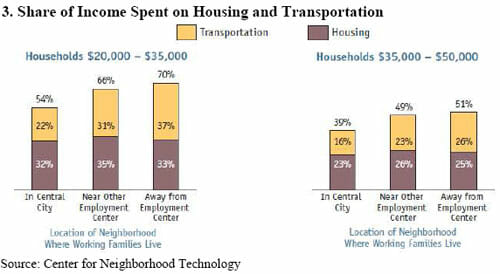Awsome Senate Testimony on Transit
From Randal O'Toole (of course). I usually try not to over-excerpt other folks work but I just can't resist in this case. I like Mr. O'Toole's work on transit because he does not just focus on the cost-benefit issues, but the personal liberty aspects as well:
My testimony focused on two points. First, despite increasing transit subsidies by 1250 percent (adjusted for inflation) since 1970, transit travel has declined from 49 to 45 trips per urban resident and transit's share of urban travel has declined from 4.0% to 1.6%. Second, even if we could get more people to ride transit, transit uses as much energy, and emits nearly as much greenhouse gases, as cars; and the trends suggest that cars will be more environmentally friendly than any transit system in the country by 2025.
There were two interesting responses to my testimony. First, another witness said (and I'm quoting from memory), "All he did was divide total greenhouse gas emissions by passenger miles." A reporter told me later that it sounded like he was questioning my methods, but his real argument was that more money spent on transit in combination with smart-growth land-use planning would lead to reduced auto driving.
I don't believe that is true (and said so), but even if it were true: can you imaging AT&T (back when all phones were land lines) telling Congress, "We want you to restrict property rights, drive up housing prices, and prevent people from living in their preferred lifestyles so that we don't have to extend our lines so far?" Or FedEx or UPS saying the same thing today? Why is transit so special that everyone else in the country has to completely rearrange their lives just for it?
You can say the answer is "climate change," but transit agencies and smart-growth planners wanted to do all these things before climate was an issue. The truth is that transit is a declining but politically powerful industry, and part of its power comes from the fact that it is publicly owned and so elected officials have a vested interest in keeping it going.
In a very real sense, transit is just like the British coal, rail, and other nationalized industries in the 1960s: its main purpose is no longer transportation but to meet other political goals such as keeping transit workers employed and construction contracts going to transit builders. If transit were private, no one would argue that we have to make the world less convenient and more expensive for the 95 percent of people who travel by car so that it will be more convenient for the 1 or 2 percent who travel by transit.
